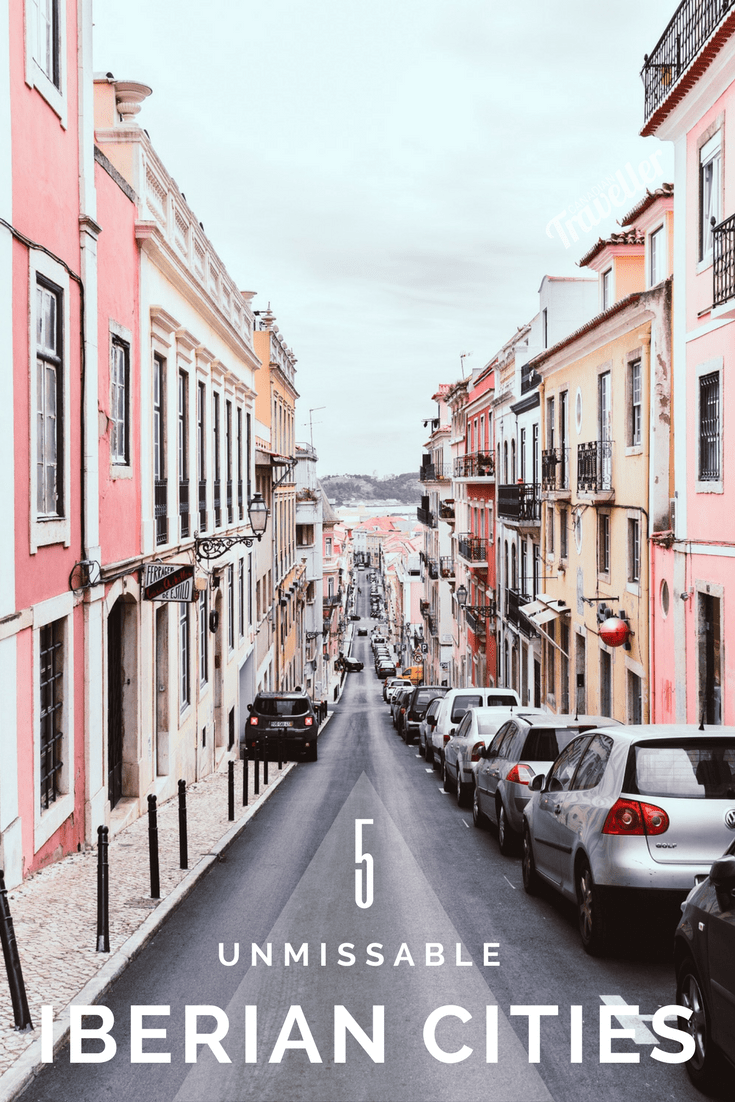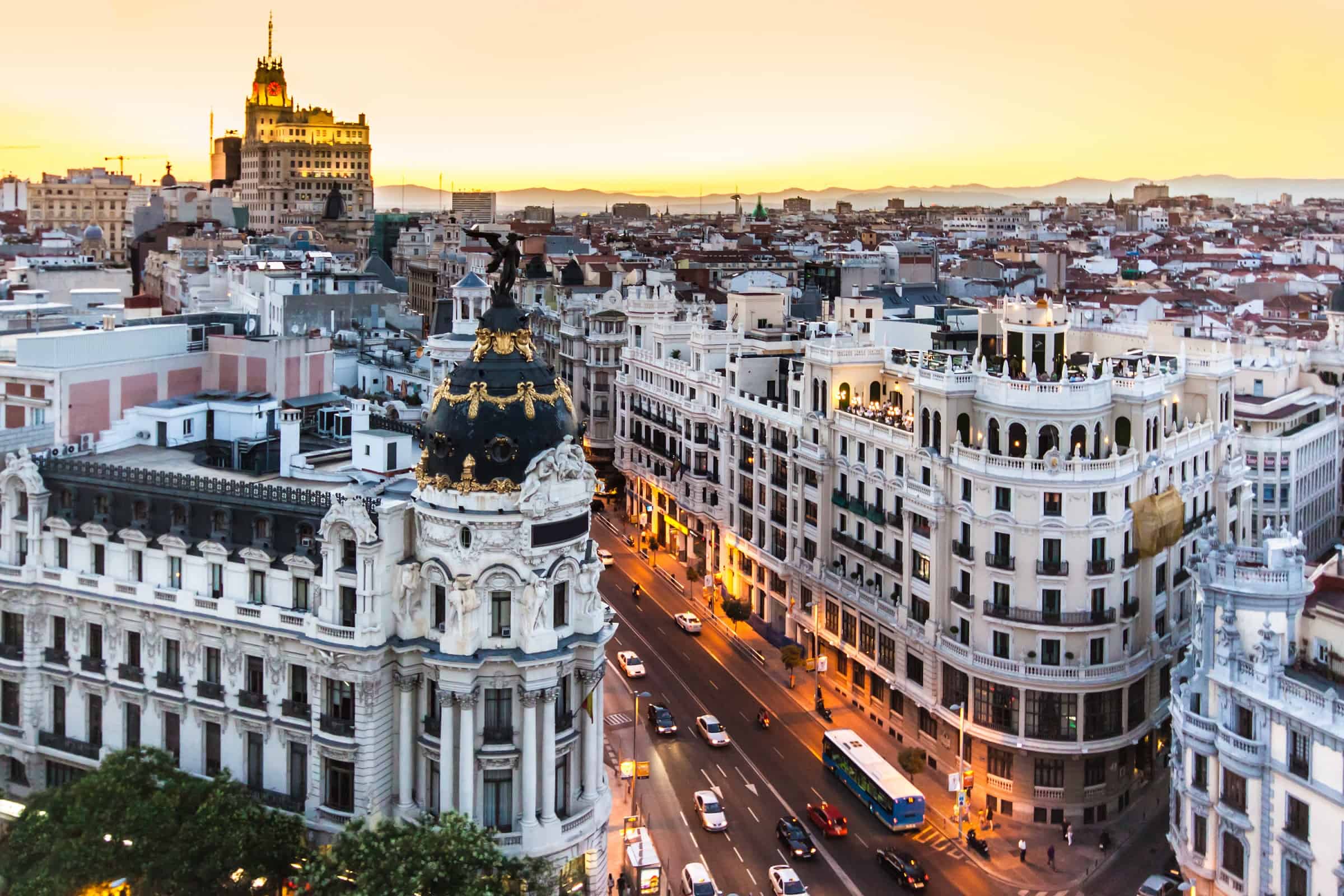
As Canadian winter tightens its grip, the Iberian peninsula (that's Spain and Portugal) sizzles on. Here are five Iberian treasures that will warm travellers with their culture, glorious sights, brimming history, and abundance of delicious dining.
Barcelona
 Dennis van den Worm
Dennis van den Worm Rutger Lan
Rutger Lan
Stylish Barcelona, one of Europe’s great ports, is packed with designer restaurants, Basque-style tapas bars, galleries and shops. It offers an energetic nightlife too.
Modernity is combined with tradition here, and Gaudi’s work has greatly influenced the face of the city’s architecture. The gigantic Basilica La Sagrada Familia, one of his most famous works, is Spain’s most visited monument. As a frequent city visitor I’d advise potential visitors to book online in advance for this so that you are given an allocated time slot, otherwise you may have to queue for hours. Better yet, let a local specialist navigate the logistics with an animated walking tour that will bring Barcelona's history to life.
Fans of flea markets will love the Encants Vells, which translates to ‘pretty old stuff’. Its mirrored canopy houses 500-plus stalls. Makes sense to get there early to snap up the best bargains!
Madrid
 Matej Kastelic
Matej Kastelic
Heading for the middle of Spain you’ll arrive in sunny Madrid, the country’s capital and largest city. It packs a punch for culture fans and is home to countless museums and galleries - including the Museo del Prado, one of the world’s most famous art galleries with more than 7,000 paintings.
While in town, catch a captivating Flamenco performance, then check out Lavapiés, Madrid’s most colourful neighbourhood with music bars, theaters and art galleries. If you’re in town on a Sunday, don’t miss El Rastro, Europe's biggest flea market, where you are sure to pick up a bargain - especially if you learn the phrase, "Cuanto cuesta?" ("How much is it?") Just don't forget to learn your Spanish numbers!
Toledo
 Greta Schölderle Møller
Greta Schölderle Møller
Speaking of capital cities, Toledo was Spain’s capital until the court made its 16th-century move to Madrid. The ancient city is only half an hour away, courtesy of the high speed rail link.
Toledo prides itself on its monuments and the old quarter of town is something of an open-air museum, hence its inclusion in UNESCO’s World Heritage list. Painter El Greco called Toledo home and the well-preserved El Greco Museum with its small collection of paintings is well worth a visit.
Strolling this ancient town's narrow cobblestone streets alone, you might miss some of Toledo's historic complexities. You'll want the guidance of a local specialist to unravel the Christian, Muslim and Jewish influences of this deeply nuanced city.
Tip: do try the local marzipan based sweets while you’re here. Traditionally made by nuns, a couple of the local convents still sell them.
Seville
 Jaime Ruedas
Jaime Ruedas
More culture awaits in compact, charming Seville in southern Spain. Seville is home to the world’s biggest Gothic cathedral, while the medieval Alcázar with its impressive 14th century ramparts is the city's most popular sight.

 Metropol Parasol
Metropol Parasol
The town is famous for its flamenco, orange trees and tapas bars – in fact it is said that the small tasty bites known as tapas were invented in Seville. Another claim to fame: Metropol Parasol, the world's largest wooden structure. The panoramic views from the 28-metre-high walkway will blow your mind. There’s a bright and cheery café up there too, so pep yourself up with fresh-pressed orange juice or a local Cruzcampo beer.
Can't-miss highlight:
Olive oil might be synonymous with Italy, but it's Spain who is the world's most voluminous producer - specifically, Andalusia. An intimate Be My Guest dinner hosted by the Morillo Family at their Seville olive oil mill is the perfect setting to eat up an unforgettable Andalusian cultural experience.
Lisbon
 Vali Sachadonig
Vali Sachadonig
Moving across from Spain to the Portuguese capital Lisbon, this is one of the world’s oldest cities and a good year-round destination, without the extremes of weather found in some other European cities.
One of my favorite places is the blast-from-the-past Baixa district, where herbalists, haberdashers, tailors and street entertainers rub shoulders in the mainly pedestrianized Baroque streets. As you wander, you may be curious about the mosaic-like pavement. They are called ‘calçadas’ and came about as a result of an earthquake in the 1700s.
Baixa’s Rossio Square is the beating heart of Lisbon and the ideal place to do as the locals do: dive into a café and relax with a bica (espresso) and pasteis de nata. These delicious creamy custard tarts are part of Lisbon’s culture, sold in every pastelaria (pastry shop) in town.
Are you wanderlusting for Spain and Portugal?
Have you been? Which was your favourite city?
Comment below!

This article was brought to you by our friends at Trafalgar.
All five cities highlighted above feature on
Trafalgar's 9-day Great Iberian Cities itinerary.
For pricing and details talk to your travel agent,
call 1.800.352.4444 or visit Trafalgar.com


